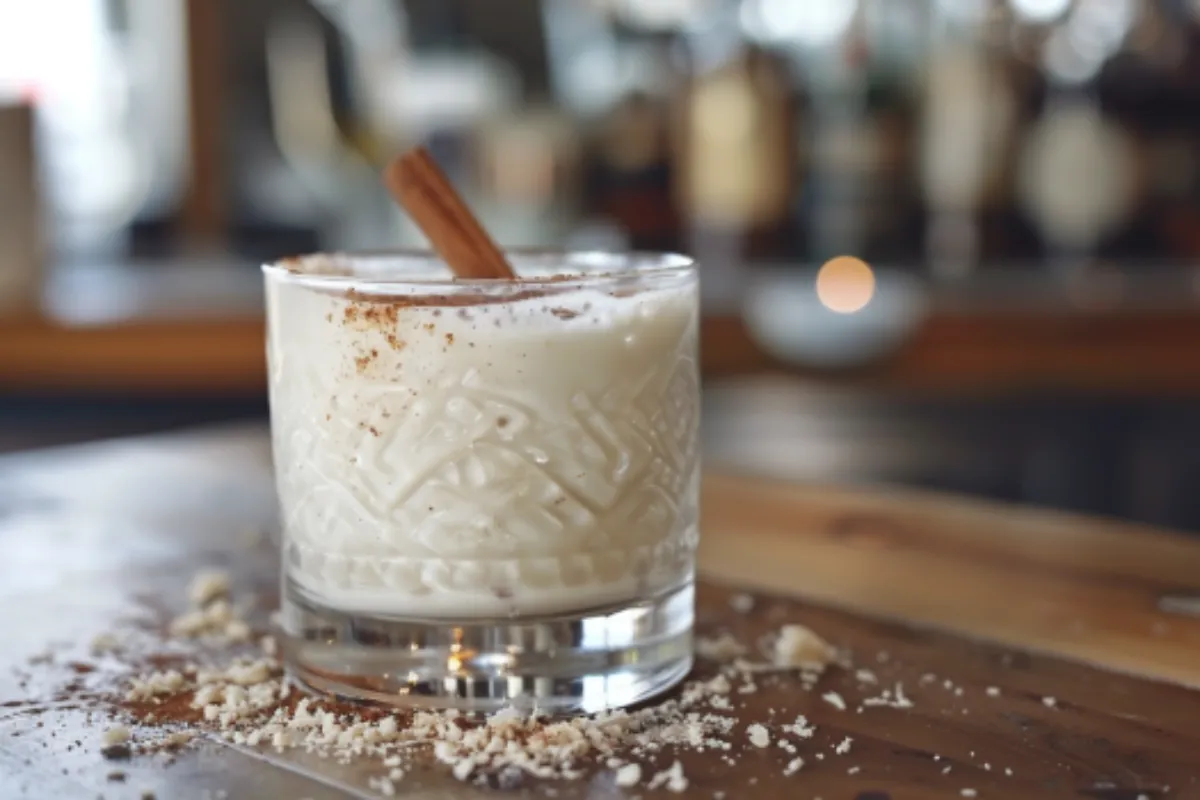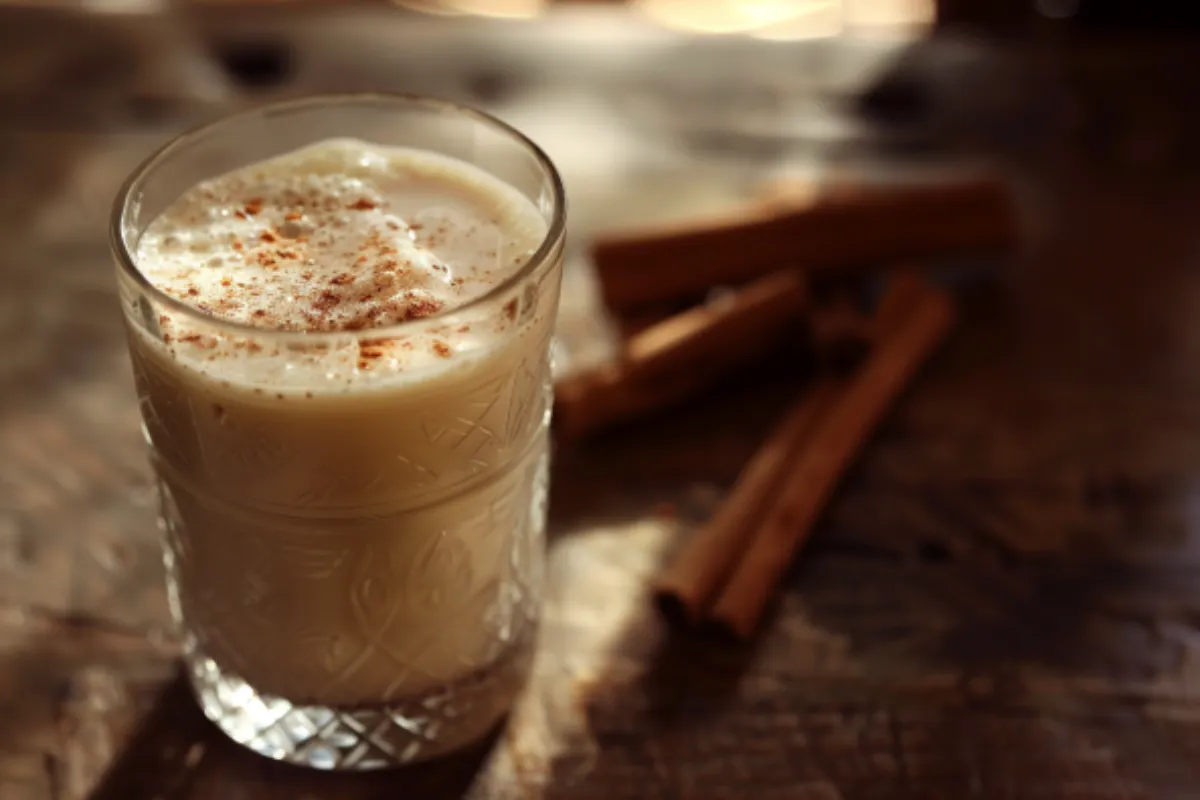Coquito, a traditional Puerto Rican holiday drink, is beloved for its creamy texture and rich flavor. However, many who prepare this festive beverage find themselves asking, “Why is my Coquito so thick?” Achieving the perfect consistency can be tricky, as Coquito is meant to be smooth and drinkable, not overly thick or gloppy. Understanding the factors that influence its texture, and how to adjust them, is key to creating the ideal Coquito that pleases every palate.
The consistency of Coquito is influenced by various ingredients, preparation methods, and storage techniques. For example, the use of coconut cream instead of coconut milk can result in a thicker drink. Additionally, storing your Coquito in a cold refrigerator can cause the fats in the coconut milk to solidify, creating a thicker texture. If you want to understand more about how different ingredients can affect your Coquito’s consistency, check out this guide on coconut milk and cream.
If your Coquito turns out thicker than you intended, don’t worry! There are several methods to adjust its consistency. In this article, we will explore the common causes of thick Coquito, provide practical tips for fixing it, and offer guidance on how to prevent this issue in the future. For more insights on making a traditional Coquito, you can also refer to this detailed Coquito recipe guide.
Understanding Coquito and Its Desired Consistency
Coquito, often referred to as Puerto Rican eggnog, is made from a blend of coconut milk, coconut cream, condensed milk, evaporated milk, rum, and spices like cinnamon and nutmeg. The drink is traditionally served cold during the holiday season and is known for its rich, creamy flavor. However, the desired consistency can vary depending on personal preference. Some people prefer a thicker, almost custard-like Coquito, while others enjoy a lighter, more fluid texture.
Achieving the right balance between thickness and drinkability is crucial for the best Coquito experience. Too thick, and the drink can become cloying or difficult to pour; too thin, and it may lack the satisfying mouthfeel that makes Coquito so beloved. Understanding the factors that affect the consistency of Coquito will help you customize it to your liking.
Common Causes of Thick Coquito

There are several reasons why your Coquito might turn out thicker than expected. Below are some of the most common causes:
Use of Coconut Cream Instead of Coconut Milk
Coconut cream is much thicker and richer than coconut milk. While it adds a luscious, velvety texture to Coquito, using too much of it can result in an overly thick drink. Coconut cream contains less water and more fat than coconut milk, which contributes to its thickness. If you want a lighter Coquito, consider using a blend of coconut milk and coconut cream or substituting some of the coconut cream with coconut milk.
Solidified Fat from Coconut Milk
Coconut milk, especially the full-fat variety, contains fats that can solidify when chilled. This is a natural characteristic of coconut milk and does not mean the Coquito has gone bad. However, it can cause the drink to thicken when stored in the refrigerator. To restore a smoother consistency, simply whisk the Coquito or let it sit at room temperature for a few minutes before serving.
Incorrect Ingredient Ratios
The balance of ingredients plays a critical role in the texture of Coquito. Adding too much condensed milk or evaporated milk can contribute to a thicker consistency, as these ingredients are denser and contain less water. Similarly, using less rum or too much coconut milk can create a viscous drink. Ensuring that the proportions of each ingredient are correct is essential for achieving the desired consistency.
Over-Mixing or Over-Blending
While blending is necessary to mix the ingredients thoroughly, over-blending can incorporate too much air into the mixture, leading to a thicker, frothy texture. It’s best to blend just enough to combine the ingredients without creating excess foam.
Extended Refrigeration
Coquito is often stored in the refrigerator, which can cause it to thicken over time as the fats solidify and the ingredients settle. This is particularly true if the drink is kept at a very cold temperature or for an extended period. While Coquito should be served cold, storing it for too long can result in a thicker-than-desired consistency.
Addition of Thickening Agents
Some recipes call for the addition of eggs, cornstarch, or other thickening agents to give the Coquito a more custard-like texture. While this is a common variation, it can also make the drink excessively thick. If you prefer a lighter Coquito, avoid using these ingredients or reduce the quantities.
How to Fix a Thick Coquito: Step-by-Step Methods
If your Coquito has turned out too thick, here are several methods you can use to adjust its consistency and make it perfect for serving:
1. Dilute with Coconut Milk and Rum
- Coconut Milk: Adding coconut milk is one of the easiest ways to thin out Coquito without altering its flavor profile significantly. Start by adding small amounts of coconut milk to the mixture and stir or blend until you achieve the desired consistency. This method works well because coconut milk retains the coconut flavor while reducing thickness.
- Rum: Adding more rum can also help to thin the Coquito. However, be cautious not to add too much, as this can overpower the other flavors. Start with a tablespoon at a time and taste as you go.
2. Use Coconut Cream Selectively
- When using coconut cream, scoop out only the thick, creamy part from the top and leave the watery part behind. This technique allows you to add richness without making the drink too thick. If you find that your Coquito is too thick, you can gradually add the watery part of the coconut cream or even coconut water to thin it out while preserving the flavor.
3. Whisking or Removing Solidified Parts
- If the fats in your Coquito have solidified due to refrigeration, whisking the mixture can help break up the solid parts and restore a smoother texture. Alternatively, use a spoon to scoop out any large solid chunks of fat. Allow the Coquito to sit at room temperature for a few minutes, then whisk or stir to combine.
4. Adjust Ingredients Like Shredded Coconut or Rum
- If your Coquito is too thick, you might have added too much shredded coconut or too little rum. To correct this, you can reduce the amount of shredded coconut in your next batch or increase the rum slightly. Adjusting these ingredients allows you to strike a balance between thickness and flavor.
5. Use an Immersion Blender for Smoother Texture
- An immersion blender is a useful tool for breaking down any clumps or solid parts in the Coquito. Blend the mixture on low speed, taking care not to over-blend, which can introduce too much air and cause frothiness. This method helps achieve a uniform and smooth drink. Learn more about using an immersion blender to achieve a smoother texture
6. Add Liquid Ingredients Gradually
- When preparing Coquito, add the liquid ingredients gradually, especially the coconut cream and condensed milk. This allows you to control the texture more precisely and avoid an overly thick mixture from the start.
Tips for Preventing Coquito from Becoming Too Thick

To avoid a thick Coquito in the future, follow these guidelines:
1. Select Ingredients Carefully
- Use a combination of coconut milk and coconut cream instead of relying solely on coconut cream. Coconut milk has a higher water content, which can help maintain a lighter consistency. You can also refer to this Coquito recipe guide for more detailed ingredient recommendations.
2. Maintain Proper Ratios and Measurements
- Follow your recipe closely to ensure you use the correct proportions of all ingredients. Small variations in the amounts of coconut cream, condensed milk, or rum can significantly impact the drink’s thickness. Measure carefully and adjust based on your preferred consistency.
3. Store Correctly to Maintain Consistency
- Store your Coquito in an airtight container with some headspace for shaking before serving. This helps to keep the ingredients well-mixed and prevents the drink from becoming too thick due to settling or solidification of fats. Proper storage methods can make a big difference.
4. Stir Frequently and Serve Fresh
- Stir or shake the Coquito before serving, especially if it has been stored for a while. This helps redistribute any settled or solidified parts, ensuring a consistent texture throughout the drink. Serving fresh can also enhance the flavor and mouthfeel of the Coquito.
5. Avoid Over-Blending
- Blend the ingredients just enough to combine them. Over-blending can incorporate too much air, creating a thicker, frothy texture that may not be desirable.
6. Adjust Refrigeration Time
- Store your Coquito in the refrigerator, but be mindful of the storage time. If you find that your Coquito thickens too much over time, try storing it for shorter periods or at a slightly warmer refrigerator setting.
Exploring Variations in Coquito Recipes

Coquito is a versatile drink with many variations, each offering a unique twist on the classic recipe. Understanding these variations can help you find the right balance for your desired consistency.
1. Traditional vs. Modern Recipes
- Traditional Recipes: Traditional Coquito recipes typically use coconut milk, coconut cream, condensed milk, evaporated milk, and rum. These ingredients create a rich, creamy drink with a balanced flavor. The traditional approach focuses on maintaining a smooth texture with a full-bodied mouthfeel.
- Modern Recipes: Modern Coquito recipes may include additional ingredients like chocolate, coffee, or fruit flavors. While these variations can add complexity to the drink, they can also affect the consistency. For example, adding chocolate or fruit puree may thicken the Coquito. Adjusting the base ingredients accordingly can help maintain the desired texture.
2. Regional Variations in Coquito Preparation
- Different regions of Puerto Rico have their unique takes on Coquito. Some areas prefer a thicker, more dessert-like drink, while others favor a lighter, more drinkable version. Exploring these regional variations can provide inspiration for customizing your Coquito to your taste.
3. Special Dietary Variations (Vegan, Dairy-Free, etc.)
- Vegan or Dairy-Free Coquito: For those with dietary restrictions, vegan or dairy-free Coquito recipes use substitutes like almond milk, coconut milk, or other plant-based alternatives. These versions may have a different consistency due to the lack of dairy fats, so adjusting the ratios of coconut milk and cream is essential for achieving the desired thickness.
Frequently Asked Questions
Can I Fix Thick Coquito by Adding Coconut Milk and Rum?
Yes, adding coconut milk and rum can help achieve the desired consistency without diluting the flavor. Start with small amounts and adjust gradually until the texture is just right.
What Should I Do If There’s Solidified Fat in My Coquito?
Simply whisk or scoop out the solidified parts. These are usually fats from the coconut that can be removed to thin out your drink.
Can I Add Shredded Coconut to Thicken My Coquito?
Absolutely! If you prefer a thicker Coquito, adding more shredded coconut will enhance the texture. However, be mindful of the amount, as too much can make the drink overly thick.
How Can I Create a Balanced Thickness and Flavor in My Coquito?
Start with one cup of rum and adjust according to your taste preference. This allows you to strike a perfect balance between thickness and flavor.
What Ingredients Are Typically Used in a Traditional Coquito Recipe?
A typical Coquito recipe includes coconut milk, cream of coconut, condensed milk, evaporated milk, spices like cinnamon and nutmeg, and rum.
Any Tips for Storing Coquito for Later Use?
Leave some headspace in the bottle for shaking before serving to maintain its smoothness and flavor.
How Can I Adjust the Recipe for a Lighter Coquito?
To make a lighter Coquito, reduce the amount of coconut cream and use more coconut milk. You can also experiment with reducing the amount of condensed milk or rum.
What Are Some Common Mistakes When Making Coquito?
Common mistakes include using too much coconut cream, not measuring ingredients properly, over-blending, and storing the drink for too long at very cold temperatures. Avoid these pitfalls for the best results.
How Can I Experiment with Flavors Without Changing the Consistency?
To add new flavors without altering the consistency, consider using extracts like vanilla or almond. You can also infuse the rum with spices or citrus peels before mixing it into the Coquito.
What Are the Best Serving Practices for Coquito?
Serve Coquito cold, in small glasses, and garnish with a sprinkle of cinnamon or nutmeg. Stir or shake before serving to ensure a consistent texture.
Conclusion: Achieving the Perfect Coquito Consistency
Creating the perfect Coquito is an art that balances tradition with personal preference. Whether you like it thick and creamy or light and smooth, understanding the factors that affect its consistency and how to adjust them will help you enjoy this festive drink just the way you like it. By following the tips and methods outlined in this guide, you can master the art of making Coquito, ensuring that every sip is a delightful experience.
Experiment with different ingredients, methods, and variations to find the perfect balance for your taste buds. Remember, the key to great Coquito is not just the recipe but the love and creativity you put into making it. Cheers to a smoother, more enjoyable holiday season with the perfect Coquito!

